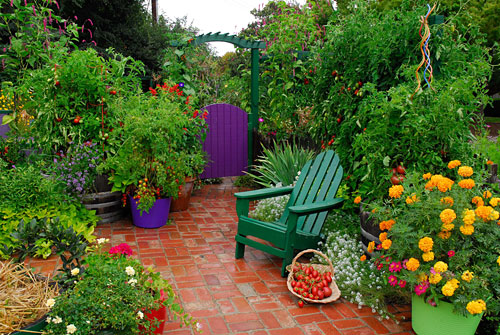Creating an edible landscape is an innovative way to blend aesthetics with functionality. By incorporating fruit trees into your garden design, you can enjoy not only their seasonal beauty but also the fresh, organic produce they offer. This article will guide you through a step-by-step process to weave fruit trees into your garden layout seamlessly and tastefully.
1. Understanding Your Garden’s Environment
Before deciding on which fruit trees to include in your garden, it’s essential to assess your garden’s conditions.
A. Assessing the Soil Type
Fruit trees have different soil requirements. While apple trees prefer slightly acidic soil, cherry trees do well in alkaline soil. Test your soil pH and structure to determine what will thrive best.
B. Checking Sun Exposure and Climate
Most fruit trees require a good amount of sunlight – at least 6-8 hours per day. Observe your garden’s sun exposure and consider your local climate. Some fruit trees, like peaches, need warm climates, while others, like apples and pears, can tolerate cooler conditions.
2. Choosing the Right Fruit Trees
Choosing the right fruit trees for your garden is crucial. Some factors to consider include:
A. Size of the Tree
Fruit trees come in various sizes – standard, semi-dwarf, and dwarf. For smaller gardens, if you buy dwarf or semi-dwarf trees can be a great choice as they take up less space and are easier to harvest.
B. Maintenance Requirements
Some trees require more care than others. If you’re new to gardening, you might want to start with low-maintenance fruit trees, like apple or plum trees.
C. Harvest Time
Select a mix of trees that yield fruit at different times of the year for a continuous harvest season. This approach will ensure that you have a variety of fresh fruits throughout the year.
3. Designing with Fruit Trees
Incorporating fruit trees into your garden design can significantly enhance its aesthetic appeal. Here are some ways to integrate them:
A. Creating Focal Points
Fruit trees, especially those that blossom, can serve as stunning focal points. For example, a beautifully pruned apple tree can draw the eye and serve as a centrepiece.
B. Using as Border Trees
Fruit trees can also function as border trees, providing privacy and structure. Rowan or elder trees can be a great addition for this purpose.
C. Incorporating Espalier Trees
Espaliered fruit trees, where the tree is trained to grow flat against a wall or fence, can add an element of sophistication and intrigue to your garden while saving space.
4. Complementing with Companion Plants
Companion planting can help improve the health and yield of your fruit trees, while also adding to the visual appeal of your garden.
A. Attracting Beneficial Insects
Plant flowers that attract pollinators, like bees and butterflies, to boost fruit production. Marigolds and lavender are excellent choices for this purpose.
B. Deterring Pests
Certain plants can deter pests naturally. Planting garlic or onions near your fruit trees can help keep pests at bay.
5. Regular Maintenance for a Healthy Edible Landscape
Maintaining your edible landscape is crucial to ensure its health and productivity.
A. Pruning and Training
Regular pruning and training not only keep your trees healthy but also maintain their shape and size to fit your garden design.
B. Watering and Feeding
Fruit trees require regular watering, particularly during periods of drought. They also benefit from organic feeding, like compost or well-rotted manure, to providethe necessary nutrients for optimal growth and fruit production.
C. Monitoring for Pests and Diseases
Regularly inspect your fruit trees for any signs of pests or diseases. Early detection and intervention can prevent minor issues from becoming major problems.
6. Harvesting and Enjoying the Fruits of Your Labour
One of the most rewarding parts of creating an edible landscape is harvesting and enjoying your homegrown fruits.
A. Optimal Harvesting Time
Understanding the optimal time to harvest each type of fruit ensures you enjoy them at their freshest and most flavourful. For instance, apples are typically ready to harvest in late summer or early autumn.
B. Storing and Preserving Fruit
Learn different methods to store and preserve your fruit so you can enjoy them throughout the year. Canning, drying, and freezing are popular methods.
Conclusion
Creating an edible landscape by incorporating fruit trees into your garden design is an excellent way to bring together beauty and utility. By understanding your garden environment, choosing the right fruit trees, designing with purpose, using companion plants, and maintaining your garden properly, you can enjoy a lush landscape that provides a bountiful harvest. Not only will this enhance your garden’s aesthetic appeal, but it will also offer the joy and satisfaction that comes from growing your own fruit. Remember, the key to a successful edible landscape is planning and patience, as fruit trees take time to establish and bear fruit. With these tips and tricks, you’re well on your way to creating a garden that’s pleasing to the eye and the palate.



















